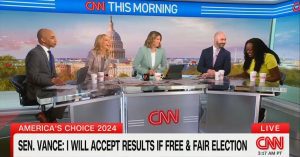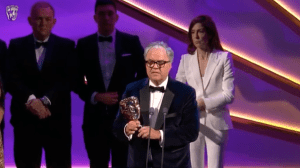When Houston’s Astrodome opened in 1965, it was billed as the Eighth Wonder of the World. No stadium before it had ever boasted its space-age features: a roof, air conditioning, and, after a year of playing on dead grass, artificial turf.
No more rainouts, no more sweltering summer weather, no more lawnmowers. It was sports utopia. LBJ and Lady Bird even showed up for the first game.
During Sunday night’s Colts-Texans game at Houston’s Reliant Stadium, though, a blimp shot showed what the ’Dome had become. Next door to its replacement, the Eighth Wonder was a third-rate barn, almost entirely darkened and dwarfed by its gleaming, retractable-roofed neighbor.
The voters of Houston go to the polls today to determine the Astrodome’s future, humble as it may be if it survives. In the late 1990’s, the Oilers bolted to Tennessee, the Astros moved to Minute Maid Park downtown (née Enron Field) and the Dome fell vacant. Now a $217 million bond authorization, if passed, would give developers the go-ahead to transform the Astrodome into what amounts to a massive convention center. It’s a far cry from hosting Elvis concerts, Evel Knievel stunts, and All-Star Games, but for Astrodome lovers, it beats the wrecking ball.
On that note, the Texans sponsored a study this year that concluded it would cost $29 million just to tear the Astrodome down and replace it with a parking lot. It’s already costing Harris County nearly $3 million a year for maintenance that simply keeps the place from falling into total disrepair. Nothing comes cheap in the world of sports stadiums.
The Astrodome lived longer as a viable sports venue than many of its successors — notwithstanding its younger, bigger brother, the New Orleans Superdome, completed in 1975. It survived Hurricane Katrina thanks to a $320 million renovation in 2006; now it seems all but certain to last into its fifth decade and beyond.
But in Seattle, the Kingdome was razed in 2000 just 24 years after it opened. In Minneapolis, the Metrodome will face the wrecking ball next February before its 32nd birthday. Detroit’s Silverdome still stands after 38 years, but it sold for just $583,000 in 2009 and is relegated to hosting monster truck rallies and a professional Frisbee team (it’s a sad fate for a place that hosted a Super Bowl and the then-largest crowd in American sports history when it packed 93,173 in for WrestleMania III in 1987). And in Atlanta, the now-21-year-old Georgia Dome will give way to a new retractable-roof stadium in 2017.
Virtually every city with an NFL or MLB team has had to face the day when they have to decide whether to put their stadiums out of their misery. Often the answer comes from a team owner who threatens to move his club elsewhere if he can’t raise money to pay for a new place, and/or promises dramatic economic impacts if the public will only chip in several million dollars.
How often do cities “need” a new stadium? Certainly the argument could be made in a place like Oakland, where the plumbing often breaks down in the baseball clubhouses at O.co Coliseum and the video board is a flickering tube compared to the HD screens in modern ballparks.
Then again, a couple of months ago, I was standing around the Texas Rangers’ clubhouse informally polling a few players as to which ballpark had the most comfortable players’ facilities and which was the least hospitable. Virtually every Ranger who had played at 99-year-old Wrigley Field – one of the most beloved stadiums in America – said it was too small, lacked basic modern amenities, and was woefully beneath major-league standards. Wrigley has no giant video board either, though a controversial renovation plan promises to change that.
Wrigley, along with 101-year-old Fenway Park, is an exception to the rule. In the past 15 years, 16 MLB teams and 16 NFL teams have built new stadiums. Unlike the old days of “cookie cutter” venues, none of those are multipurpose stadiums — and in Houston, Cincinnati, Detroit, New York, Philadelphia, Pittsburgh, and Phoenix, they constructed new buildings for both the football and baseball teams.
Building on research done by Rutgers University’s Judith Grant Long, Deadspin put together some enlightening statistics last year on public financing of stadiums. From 1991 to 2004, 78 stadiums were built or renovated at a cost of $26 billion – 61 percent of provided by taxpayers. Subsidies have poured into stadiums seemingly as quickly as the concrete could flow.
Never mind that myriad economic studies say the only people who are guaranteed to see a windfall from publicly funded stadiums are the owners themselves. University of Chicago economist Allen Sanderson put it succinctly: “If you want to inject money into the local economy, it would be better to drop it from a helicopter than invest it in a new ballpark.”
When I was an NHL beat writer, I covered a Princeton-educated center named Jeff Halpern whose senior thesis was entitled “The Stadium: The Economics of Publicly Subsidized Stadiums.” Halpern was no goon, obviously, but his opinion was surprising for someone who made his living skating from city to city in publicly funded arenas. His conclusion? Such projects did not create enough economic benefit to justify the cost to the public.
Still, the people shrug and continue to vote for new taxes or bonds if it means getting a new stadium. The question is, will Houston do the same thing to preserve an iconic sports structure that has seen its last big game? It seems the only thing that can save the Astrodome is voters’ nostalgia. And if nostalgia can keep Wrigley and Fenway on life support indefinitely, there’s no reason why it can’t save the old Harris County Domed Stadium where Mickey Mantle hit the first home run.
A few days ago, the county held an auction of Astrodome items, a fire sale offering everything from the old, multicolored, cushioned seats, to pieces of AstroTurf. Folks lined up overnight to save what they could. Perhaps the voters feel the same way about the structure itself and will give it a reprieve tonight. If not, as Willie Nelson sang after the Astros’ final regular season game there, “Turn out the lights – the party’s over.”



